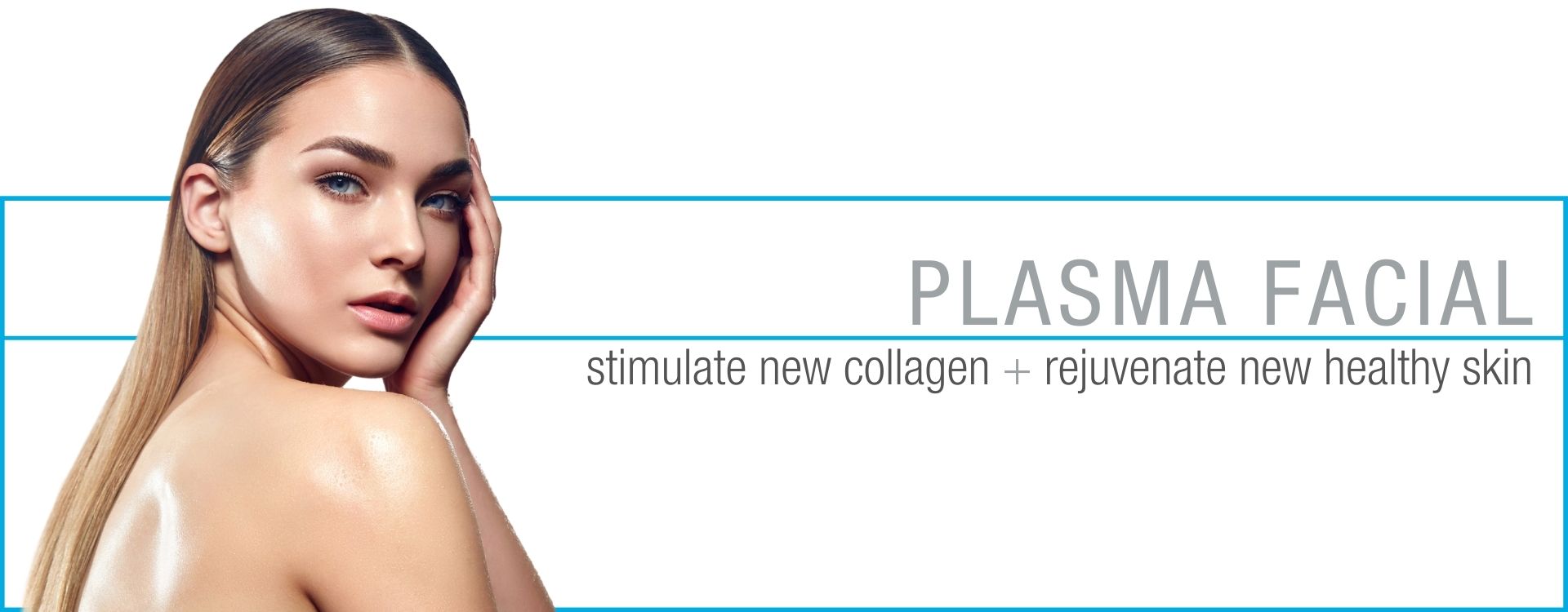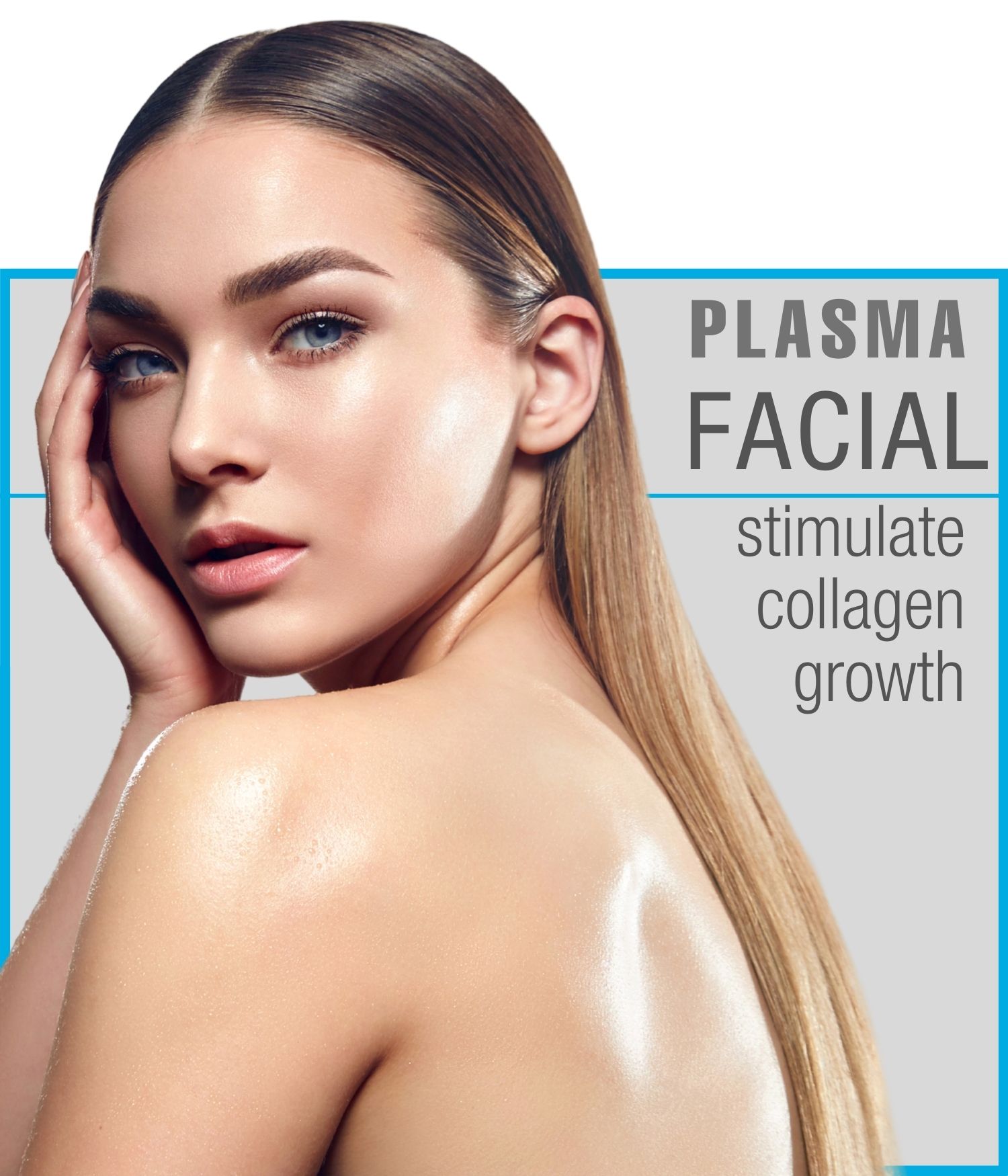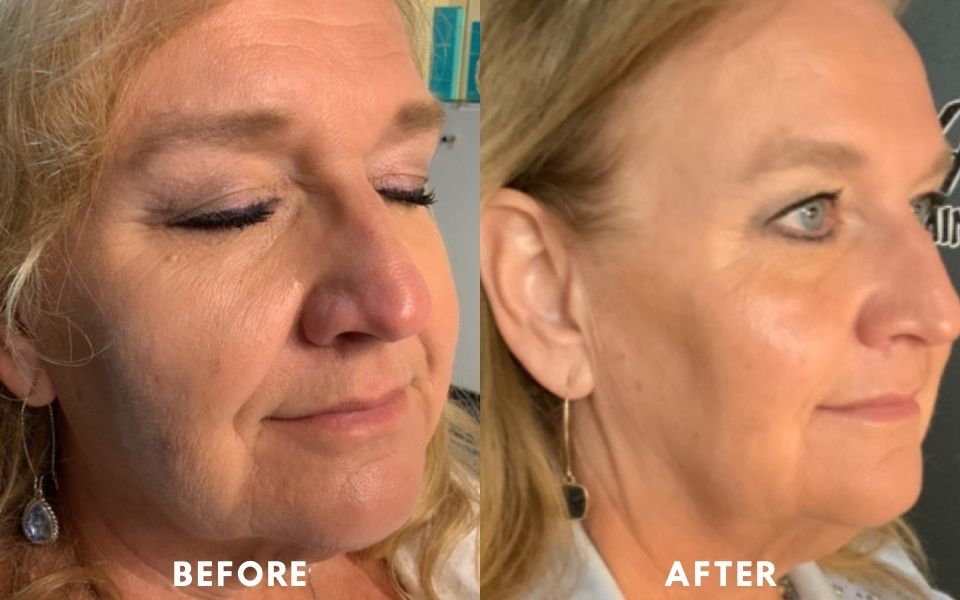

Schedule a free consultation
By submitting this form you agree to be contacted via phone/text/email.
Plasma Facial | Collagen-Induction Therapy
A Plasma Facial combines microneedling (also known as collagen-induction therapy) with topical application of human growth factors (HGF) derived from your own blood.
This skin rejuvenation treatment creates an overall improvement to skin texture and tone. It can also reduce scars (including acne scars), correct hyperpigmentation, tighten lax skin, smooth fine lines, and minimize the appearance of large pores.
There’s been a lot of hype about Plasma Facials—Kim Kardashian West famously got one and shared a post-procedure selfie with blood on her face.
The Plasma Facial is a trademarked procedure that’s standardized by those licensed to perform it, but many doctors offer similar customized facial rejuvenation treatments, sometimes using radiofrequency microneedling to boost its skin-firming benefits.
Benefits of Plasma Facial
- The treatment is fast (typically taking less than an hour) and requires little downtime.
- The Plasma Facial maintains a high Worth It Rating on RealSelf, with many members praising their results, especially after multiple treatment sessions.
- It’s suitable for all skin tones and types. Still, to minimize the risk of hyperpigmentation, providers may more shallowly microneedle and/or pretreat patients who have olive or brown skin tones.
- There’s little chance of an allergic reaction, since HGF comes from your own blood. In a review of 16 studies on HGF for skin rejuvenation, no adverse events were reported.
Plasma Facial Before and After

What does a Plasma Facial do?
A Plasma facial works in two ways. First, microneedling creates tiny pinpricks in your skin, triggering a wound-healing response that stimulates your skin’s natural collagen and elastin production. Then, to further boost skin cell regeneration, the HGF penetrates the skin through the microchannels created via microneedling.
The HGF from your blood contains red blood cells, white blood cells, and tiny blood cells that contribute to essential growth functions and healing. The HGF contribute to cell proliferation and differentiation. Over time, the HGF amplifies collagen production, increases cell turnover, and spurs growth of new blood vessels, resulting in longer-term rejuvenating effects.
You can see increased radiance within days of your treatment, and benefits increase over four to six weeks as the production of new collagen increases.
Studies show that microneedling and enhanced HGF treatments like the Plasma Facial can improve everything from sun damage to acne scars.
What happens during a Plasma Facial?
The treatment begins with a blood draw. Your provider will draw a few ounces of your blood and then spin it through a centrifuge in order to concentrate the tiny blood cells and isolate the HGF.
After cleansing your skin and applying a topical anesthetic to numb your face, they’ll move the microneedling device (which contains single-use, sterile needle cartridges) across your skin, while the needles move up and down in a stamp-like motion.
Most devices have an adjustable needle head that customizes the depth of the needle pricks according to your skin type and the part of the face being treated. Usually, they’ll go deep enough to produce pinpoint bleeding.
Once the microneedling is complete, they’ll spread the HGF over your skin. Some providers recommend leaving the HGF on for up to 24 hours, to reap the most benefits.
How painful is the Plasma Facial?
Contrary to popular belief, this treatment is usually painless. The initial blood draw can be slightly painful, but no more than any other needle prick would be.
It is also possible for some sections of the treated area to feel a little discomfort during the procedure, though, especially if the topical anesthetic wasn’t spread far enough around the lips or eyes. However, this isn’t common.
Recovery is also generally painless, but if you do feel any severe pain post-treatment, be sure to immediately alert your doctor.
What can you expect afterward?
Afterward, you’ll look and feel like you have a sunburn, perhaps accompanied by some mild bleeding and bruising.
Your skin will be extra sensitive, so protect it from anything that might cause irritation for two to three days:
- Strip your skin-care routine down to the basics: a gentle cleanser and a simple, hydrating moisturizer; but don’t wash your face for at least six hours after your treatment, to allow the HGF time to sink in.
- Avoid direct sun exposure and be diligent about applying sunscreen. Physical sunblocks that contain zinc oxide and titanium dioxide are less likely to irritate.
- Go makeup-free. Remember, your skin has tiny holes in it, so anything you apply could potentially penetrate below the surface.
- Don’t work up a sweat. Sweat contains bacteria that can aggravate sensitive skin.
The entire recovery time shouldn’t be longer than a week, but your skin may remain sensitive for a little longer than that.
